Direct Pulp capping
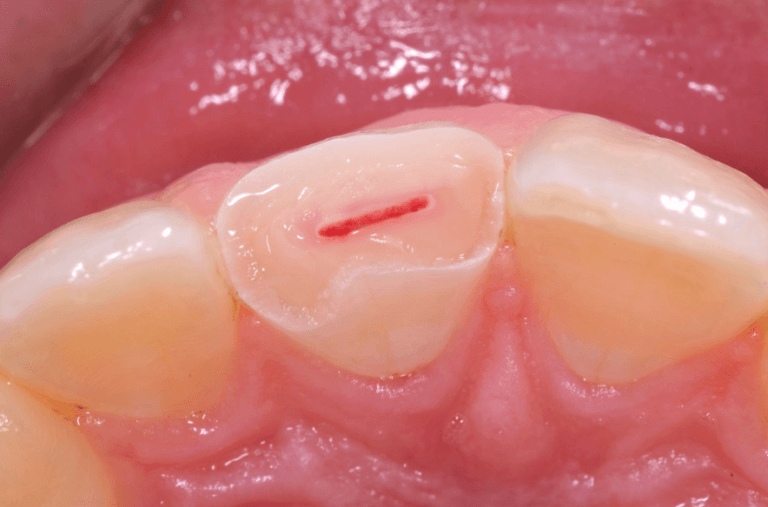
What Is Direct Pulp Capping?
Your dental health is a crucial part of your overall well-being, and it’s essential to stay informed about the various procedures and treatments available to maintain a bright and healthy smile. One such procedure that you may have heard of, but might not be entirely familiar with, is “Direct Pulp Capping.”
The dental pulp is the soft innermost tissue located within a tooth. It consists of sensitive nerve fibers, blood vessels, and connective tissues. The dental pulp plays a vital role in maintaining the health of the tooth by nourishing it, transmitting sensory information (such as temperature and pain sensations), and helping with tooth development. When the dental pulp becomes infected or damaged due to factors like tooth decay or tooth trauma, it may require treatment such as direct or indirect dental pulp capping, or removal through procedures like root canal treatment to preserve the tooth’s function and structure.
Direct Pulp Capping is a type of dental pulp capping procedure that tries to maintain the vitality and function of pulp tissue that has been injured by carious lesion, operative protocols or iatrogenic causes, or dental trauma. During this procedure, after caries excavation, a dental biomaterial is placed directly over the exposed dental pulp. The aim of direct pulp capping is to promote pulp healing and mineralized tissue barrier formation by placing a dental biomaterial directly over the exposed pulp. Successful application of this approach avoids the need for further and more extensive treatment such as root canal treatment or tooth removal.
Before deciding on whether Direct Pulp Capping are right for you, there are some things you should know:
- Who Needs Direct Pulp Capping?
- What Are The Advantages Of Direct Pulp Capping?
- What Are Indications for Direct Pulp Capping?
- What Are Contraindications for Direct Pulp Capping?
- What Are The Alternative Treatments If I Do Not Choose Direct Pulp Capping?
- How Much Does Direct Pulp Capping Cost?
- What Are The Steps In The Direct Pulp Capping Procedure?
- Can I Have Direct Pulp Capping If I Am Pregnant?
- What Are Common Problems With Direct Pulp Capping?
If you have any further questions about Direct Pulp Capping or other dental services offered at Atlas Dental, please contact us.

Free phone consultation
Have questions about Dental Pulp Capping? Schedule a free phone consultation with our Toronto dentist.

5 star google reviews
Our patients love us! See for yourself why more and more people are choosing Atlas Dental for Dental Pulp Capping.

Book Emergency tooth filling
Do you think you have cavities and need a Dental Pulp Cap? Book an emergency tooth filling online.
Who Needs Direct Pulp Capping?
Direct Pulp Capping is a dental procedure that serves a specific purpose, and not everyone will require it during their lifetime. Understanding who may benefit from this treatment is essential for making informed decisions about your dental health. Let’s explore the circumstances in which Direct Pulp Capping may be recommended:
- Deep Dental Decay: One of the most common reasons for Direct Pulp Capping is deep dental decay, often caused by untreated cavities. When decay penetrates through the enamel and dentin layers and reaches the dental pulp, it can lead to inflammation, infection, and severe discomfort. In such cases, a dentist may recommend Direct Pulp Capping to save the tooth and prevent the need for more invasive procedures like root canal therapy.
- Trauma or Injury: Accidents or trauma to the teeth, such as a severe blow or fracture, can expose the dental pulp. This exposure can result in pain and sensitivity. Direct Pulp Capping can be a suitable solution to protect and preserve the affected tooth, reducing the risk of infection and further damage.
- Cracked Teeth: Teeth with cracks or fractures can allow bacteria to enter the dental pulp, leading to infection. Direct Pulp Capping can be an option to seal the tooth and prevent the progression of infection, thereby preserving the tooth’s function and appearance.
- Dental Restorations: Sometimes, during routine dental procedures like cavity preparation or crown placement, the dental pulp may become inadvertently exposed. In such cases, your dentist may recommend Direct Pulp Capping to safeguard the tooth and ensure the success of the restoration.
- Children’s Teeth: Direct Pulp Capping is occasionally performed on primary (baby) teeth. Children may need this procedure if they experience dental trauma or have deep cavities in primary teeth. Preserving these teeth is essential for proper chewing, speech development, and maintaining space for permanent teeth.
- Early Intervention: In certain cases, when a dentist detects early signs of dental pulp inflammation or infection, they may recommend Direct Pulp Capping as a preventive measure to stop the problem from progressing further.
It’s important to note that not all cases of dental pulp exposure or discomfort require Direct Pulp Capping. Your dentist will evaluate your specific situation, taking into account factors like the extent of damage, the tooth’s location, and your overall dental health, before recommending this procedure. If you have further questions about Direct Pulp Capping, please contact us.
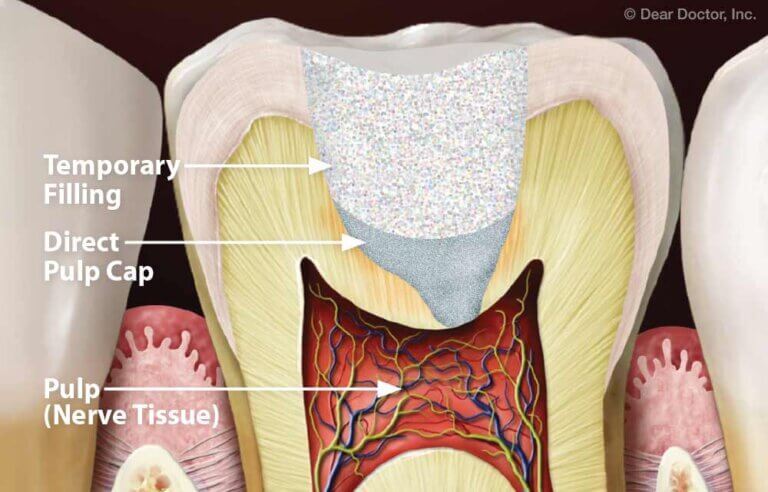
What Are The Advantages Of Direct Pulp Capping?
Direct Pulp Capping is a valuable dental procedure that offers several advantages, both in terms of preserving your dental health and avoiding more invasive treatments. Let’s explore the key benefits of this procedure:
- Preservation of Natural Teeth: One of the primary advantages of Direct Pulp Capping is that it allows you to preserve your natural tooth. By protecting the dental pulp and preventing further damage or infection, this procedure helps maintain the structure and function of the affected tooth. Preserving your natural teeth is essential for proper chewing, speech, and maintaining the alignment of your teeth.
- Minimally Invasive: Compared to more extensive treatments like root canals or tooth extractions, Direct Pulp Capping is a minimally invasive procedure. It involves removing the damaged or infected tissue, applying a pulp-capping material, and sealing the tooth with a restoration. This means less trauma to the tooth and surrounding tissues, reducing post-treatment discomfort and recovery time.
- Preservation of Tooth Strength: Direct Pulp Capping reinforces the remaining healthy tooth structure. By placing a barrier over the exposed pulp, the tooth’s strength and integrity are maintained. This can prevent the need for more extensive restorative treatments that may require additional tooth reduction.
- Less Expensive: In many cases, Direct Pulp Capping is a cost-effective option compared to more complex procedures like root canals or dental implants. This can be particularly beneficial for individuals without dental insurance or those looking to manage their dental expenses.
- Natural Look and Feel: After a successful Direct Pulp Capping procedure, the restored tooth looks and functions like a natural tooth. It blends seamlessly with your existing teeth, ensuring a comfortable and aesthetically pleasing result.
- Pain Relief: If you were experiencing tooth pain or sensitivity due to pulp exposure, Direct Pulp Capping can provide relief by protecting the exposed pulp and allowing it to heal.
While Direct Pulp Capping offers numerous advantages, it’s important to remember that its success depends on several factors, including the extent of pulp exposure, the presence of infection, and the dentist’s skill. Not all cases are suitable for this procedure, and your dentist will carefully evaluate your specific situation to determine the most appropriate treatment plan. If you have further questions about Direct Pulp Capping, please contact us.
What Are Indications for Direct Pulp Capping?
Indications for Direct Pulp Capping refer to the specific situations or conditions in which a dentist may recommend this procedure. Direct Pulp Capping is typically considered when:
- Shallow to Moderate Dental Decay: When decay has reached the dentin layer of the tooth, but the dental pulp is not extensively damaged or infected, pulp capping may be indicated. It’s important to catch decay at this stage to prevent it from progressing further.
- Small Pulp Exposure: If there is a small, pinpoint exposure of the dental pulp due to a cavity or minor trauma, direct pulp capping may be considered. The size of the exposure is a critical factor in determining the feasibility of this procedure.
- No Signs of Infection: Direct Pulp Capping is typically suitable when there are no signs of active infection within the dental pulp. Infection may require more extensive treatments like root canal therapy.
- Tooth Vitality: The tooth should still be vital, meaning it responds to stimuli like temperature changes and is not non-vital or “dead.” Vital teeth have a better chance of success with pulp capping.
- Surgical Access Is Feasible: The tooth should be accessible for the procedure, and the dentist should be able to effectively seal the tooth after the pulp capping to prevent further contamination.
- Patient’s Overall Dental Health: The patient’s oral health and the condition of neighboring teeth are considered. If pulp capping is done on a primary (baby) tooth in a child, the overall dental development and the importance of maintaining space for permanent teeth are also taken into account.
The dentist will thoroughly assess your dental condition, including the size and location of the exposure, the presence of symptoms (such as pain or sensitivity), and the overall health of the tooth, before recommending Direct Pulp Capping. In cases where there is extensive pulp damage, infection, or other complications, alternative treatments like root canal therapy or tooth extraction may be necessary to address the issue effectively. If you have further questions about Direct Pulp Capping, please contact us.
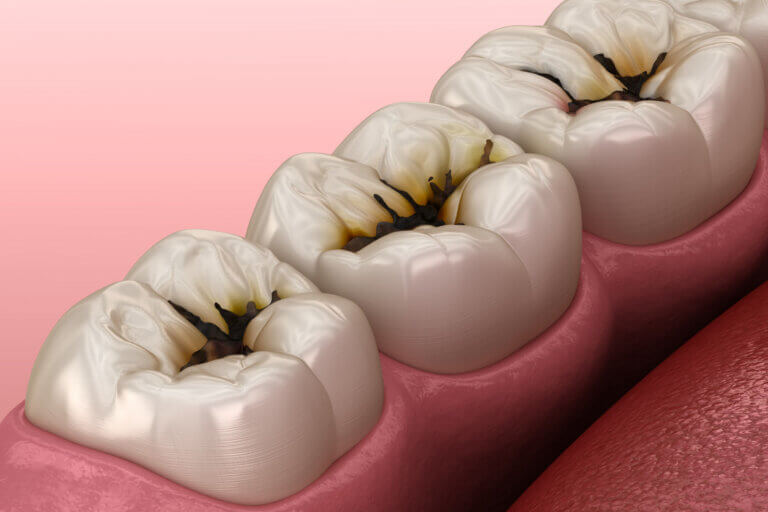
What Are Contraindications for Direct Pulp Capping?
Contraindications for Direct Pulp Capping are specific situations or conditions in which this procedure is not recommended or may pose risks to the patient’s dental health. Dentists carefully assess each case to determine if Direct Pulp Capping is appropriate. Common contraindications include:
- Pulpal Infection: If there is an active infection within the dental pulp, Direct Pulp Capping is generally contraindicated. In such cases, the infection should be addressed first through root canal therapy or tooth extraction.
- Extensive Pulpal Exposure: When the dental pulp is significantly exposed or damaged, particularly in large or deep cavities, Direct Pulp Capping may not provide sufficient protection. In these cases, more extensive treatments like root canals are often necessary.
- Non-Vital Tooth: If the tooth is non-vital (meaning it does not respond to stimuli like temperature changes), it may not be a suitable candidate for Direct Pulp Capping, as the pulp is likely irreversibly damaged.
- Unfavorable Tooth Structure: Teeth with severe structural damage, such as cracks or fractures that compromise the tooth’s stability, may not be ideal candidates for Direct Pulp Capping. Similarly, if the tooth cannot be adequately restored with a filling or crown, it would also not be a candidate for Direct Pulp Capping. The tooth may require extraction or alternative treatments.
- Patient Preference: In some cases, a patient’s preference for more definitive treatment, such as extraction and tooth replacement, may lead to the contraindication of Direct Pulp Capping.
It’s crucial for patients to consult with their dentist for a comprehensive evaluation and discussion of treatment options. Dentists consider the specific circumstances of each case to determine the most appropriate course of action for preserving dental health and preventing complications. If you have further questions about Direct Pulp Capping, please contact us.
What Are The Alternative Treatments If I Do Not Choose Direct Pulp Capping?
While Direct Pulp Capping can be an effective way to preserve your tooth when the dental pulp is compromised, it may not always be the most suitable option for everyone or every situation. If you choose not to undergo Direct Pulp Capping or if your dentist determines it’s not appropriate for your condition, several alternative treatments may be recommended, depending on the extent of pulp damage and infection. Here are some common alternatives:
- Indirect Pulp Capping: This is an alternative to Direct Pulp Capping when the pulp is not directly exposed but is at risk due to deep dental decay. In this procedure, the dentist removes the decayed tissue, leaving a thin layer of affected dentin above the dental pulp. A medicated material is placed over the remaining dentin to stimulate healing and protect the pulp. A restoration, like a filling or crown, is then applied to seal the tooth.
- Root Canal Therapy: This is one of the most common alternatives to Direct Pulp Capping when the dental pulp is significantly damaged or infected. During a root canal procedure, the dentist removes the infected pulp, cleans and disinfects the tooth’s interior, and then seals it with a biocompatible material. A crown is often placed on the tooth to restore its strength and appearance. Root canal therapy allows you to keep the natural tooth while eliminating the source of infection and discomfort.
- Tooth Extraction: In cases where the tooth is severely damaged, infected beyond repair, or poses a risk to surrounding teeth, extraction may be necessary. Tooth extraction involves the removal of the affected tooth from the mouth. After extraction, you may explore tooth replacement options such as dental implants, bridges, or removable dentures to fill the gap.
The choice of alternative treatment depends on various factors, including the tooth’s condition, your overall oral health, your preferences, and your dentist’s recommendations. Your dentist will conduct a thorough examination and discuss these options with you, considering the long-term impact on your dental health and overall well-being. If you have further questions about Direct Pulp Capping, please contact us.
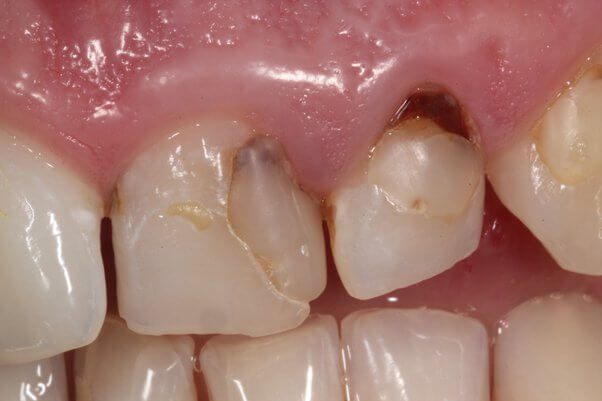
Cost of Dental Pulp Capping
The cost of Dental Pulp Capping, whether it is done using a direct or indirect technique, is the same as the cost of a dental filling.
Whether it is an amalgam filling, composite resin filling, or glass ionomer filling, the cost of any of these Dental Fillings are similar and will depend on the location of the tooth (anterior, bicuspid or molar), as well as the size of the filling, which is translated as the number of “surfaces” involved. Imagine each tooth as a 5 surface box. Each “surface” that gets incorporated will dictate the size (and overall cost) of the tooth filling. Therefore, the cost of a filling can range between $200-460. The codes relevant to dental fillings in the Ontario Dental Association’s Suggested Fee Guide appear as follows:
Permanent Anteriors:
- 23111 – One surface: $200
- 23112 – Two surfaces: $250
- 23113 – Three surfaces: $300
- 23114 – Four surfaces: $370
- 23115 – Five surfaces (maximum surfaces per tooth): $390
Permanent Bicuspids:
- 23311 – One surface: $220
- 23312 – Two surfaces: $275
- 23313 – Three surfaces: $330
- 23314 – Four surfaces: $400
- 23315 – Five surfaces or maximum surfaces per tooth: $420
Permanent Molars:
- 23321 – One surface: $240
- 23322 – Two surfaces: $300
- 23323 – Three surfaces: $360
- 23324 – Four surfaces: $440
- 23325 – Five surfaces or maximum surfaces per tooth: $460
Dental Fillings are considered a basic service under all dental insurance plans and should be covered to your maximum insurable limit, but be sure to find out from your dental insurance plan provider how much you are eligible for before going ahead with dental treatment. Our fees are consistent with the ODA Fee Guide.
For patients without dental insurance, Atlas Dental is pleased to offer dental financing through Dentalcard. Affordable payment plans start at 7.95% for terms of 6 months to 6 years. To learn more about Dentalcard dental treatment financing, follow this link.
What Are The Steps In The Direct Pulp Capping Procedure?
Direct Pulp Capping is a dental procedure aimed at preserving the dental pulp when it is exposed or at risk due to dental decay, trauma, or injury. This procedure involves several steps to protect the pulp and restore the tooth. Here’s a detailed overview of the typical steps involved in a Direct Pulp Capping procedure:
- Diagnosis and Evaluation: Your dentist will begin by conducting a thorough examination of the affected tooth. This assessment includes evaluating the extent of pulp exposure, checking for signs of infection or inflammation, and taking X-rays to assess the tooth’s internal condition.
- Local Anesthesia: To ensure your comfort during the procedure, your dentist will administer a local anesthetic to numb the area around the affected tooth. This will prevent you from feeling any pain or discomfort during the pulp capping process.
- Tooth Isolation: The dentist will place a rubber dam around the tooth being treated. This rubber dam is a thin sheet of latex or similar material that is stretched over a frame and used to isolate the tooth from saliva and other oral fluids. This ensures a clean and dry environment for the procedure.
- Removal of Decay: If there is any decay or damaged tooth structure present, the dentist will carefully remove it using dental instruments. This step is crucial to access the exposed pulp and prepare the tooth for treatment.
- Direct Pulp Capping: Once the tooth is prepared, the exposed or near-exposed dental pulp is treated. The dentist will apply a medicated pulp-capping material directly onto the exposed pulp tissue. This material is typically calcium hydroxide or a similar biocompatible substance. It serves as a barrier, protecting the pulp from further infection and promoting healing.
- Sealing the Tooth: After the pulp-capping material is placed, the tooth is sealed using a dental restoration. The type of restoration used can vary depending on the extent of tooth damage. It may involve a dental filling for smaller cavities or a dental crown for more substantial damage. The restoration is designed to seal the tooth, protect it from further damage, and restore its functionality and appearance.
- Post-Procedure Care: After the Direct Pulp Capping procedure, your dentist will provide tooth filling instructions for post-procedure care. This may include recommendations for managing any mild discomfort or sensitivity and guidance on maintaining good oral hygiene to prevent future issues.
- Follow-Up: You may be scheduled for a follow-up appointment to monitor the success of the pulp capping procedure and ensure that the tooth is healing properly. X-rays may be taken to assess the tooth’s condition over time.
It’s important to note that the success of Direct Pulp Capping depends on various factors, including the extent of pulp exposure, the absence of infection, and the overall health of the tooth. Your dentist will carefully evaluate your specific situation and provide you with personalized guidance on whether Direct Pulp Capping is a suitable treatment option for you. If you have further questions about Direct Pulp Capping, please contact us.
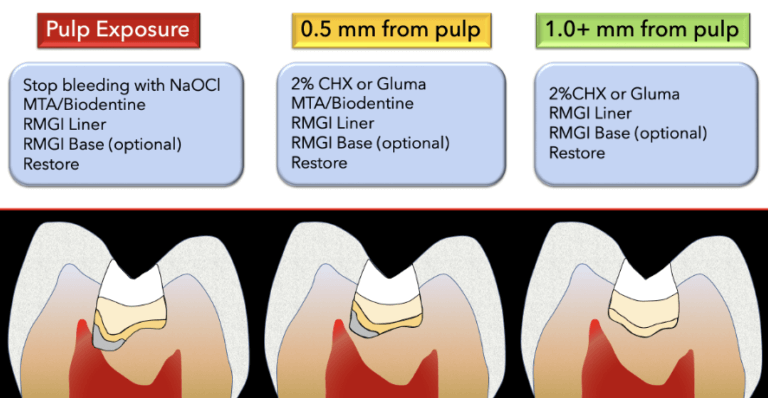
Can I Have Direct Pulp Capping If I Am Pregnant?
Pregnancy is a special time in a woman’s life that requires careful consideration of medical and dental procedures to ensure the health and safety of both the mother and the developing baby. If you are pregnant and in need of dental treatment, including Direct Pulp Capping, it’s essential to discuss your situation with your dentist and healthcare provider to make informed decisions about your dental care.
Here are some key points to consider regarding Direct Pulp Capping during pregnancy:
- Timing of Treatment: Whenever possible, non-urgent dental procedures are often postponed until after the first trimester of pregnancy. This is because the first trimester is a critical period for fetal development, and it’s best to minimize exposure to any potential risks, including dental treatments.
- Local Anesthetics: Local anesthetics, which are commonly used to numb the area during dental procedures, are generally considered safe during pregnancy. However, it’s essential to inform your dentist of your pregnancy so they can select an appropriate and safe anesthetic option.
- Radiation Exposure: Dental X-rays are typically avoided during pregnancy, especially during the first trimester, to minimize radiation exposure to the developing fetus. If X-rays are necessary, your dentist will take precautions to protect you and your baby, such as using lead aprons and thyroid collars.
- Medications: Your dentist will carefully choose medications and materials used during Direct Pulp Capping to ensure they are safe for pregnant patients. Certain medications, like antibiotics or pain relievers, may be prescribed cautiously if necessary.
- Patient Comfort: Stress and anxiety can have adverse effects during pregnancy. Dentists are aware of this and strive to create a comfortable and supportive environment for pregnant patients.
In cases where Direct Pulp Capping is deemed necessary during pregnancy, your dentist and healthcare provider will work together to minimize potential risks while addressing your dental concerns. The decision to proceed with this procedure or any other dental treatment during pregnancy should be made collaboratively, taking into account the urgency of the dental issue and the potential impact on both maternal and fetal health. If you have further questions about Direct Pulp Capping, please contact us.
What Are Common Problems With Direct Pulp Capping?
While Direct Pulp Capping is a valuable dental procedure that can help preserve teeth with exposed or at-risk dental pulp, there are potential challenges and complications that patients may encounter. It’s important to be aware of these common problems associated with Direct Pulp Capping:
- Incomplete Healing: In some cases, the dental pulp may not heal completely after Direct Pulp Capping. This could be due to factors like the extent of damage, infection, or the age and overall health of the patient. Incomplete healing may necessitate further dental treatment, such as a root canal.
- Recurrent Decay: If the tooth continues to be exposed to bacteria and plaque due to poor oral hygiene habits, new decay can develop around the restoration or along the tooth’s margins. This recurrent decay may compromise the success of the pulp capping procedure.
- Infection: If there was undetected or residual infection within the dental pulp before the pulp capping procedure, it could lead to post-treatment infection and complications. Signs of infection may include persistent pain, swelling, and discomfort.
- Pulpal Calcification: After Direct Pulp Capping, the dental pulp may respond by forming a calcified barrier. While this can be a protective response, it can also limit the ability of the pulp to heal naturally in the event of future trauma or infection.
- Tooth Fracture: In cases where the tooth was structurally compromised before the procedure, there is a risk of the tooth fracturing or breaking, especially if it is subjected to additional trauma or excessive biting forces.
- Failure to Maintain Restoration: The long-term success of Direct Pulp Capping depends on maintaining the restoration placed over the tooth. If the restoration (filling or crown) becomes damaged, dislodged, or worn out over time, it can expose the tooth to potential problems.
- Need for Additional Dental Work: In some instances, the tooth may not respond favorably to Direct Pulp Capping, requiring more extensive treatment like root canal therapy or tooth extraction.
- Tooth Sensitivity: While some level of sensitivity is normal after Direct Pulp Capping, excessive or prolonged sensitivity can be a concern and may indicate unresolved issues or complications.
If you experience persistent pain, swelling, or any unusual symptoms after undergoing Direct Pulp Capping, it’s essential to contact your dentist as soon as possible. Early detection and intervention can help manage potential problems and ensure the long-term success of the procedure. If you have further questions about Direct Pulp Capping, please contact us.
We also think you’ll like…
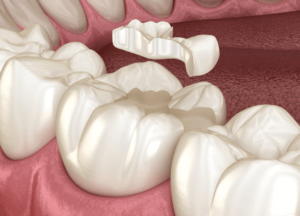
Porcelain Inlay
Porcelain Inlay What Is A Porcelain Inlay? A Porcelain Inlay is a type of dental restoration crafted from high-quality, biocompatible porcelain material. These restorations are

Porcelain Inlay Recementation
Porcelain Inlay Recementation What Is Dental Inlay Recementation? A Porcelain Inlay is a type of dental restoration crafted from high-quality, biocompatible porcelain material. These restorations
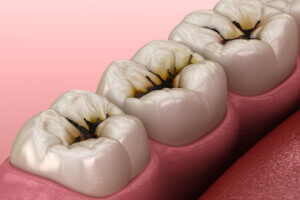
Cavity
Cavity What Is A Cavity? A Cavity, also known as dental caries, is a common dental problem that affects people of all ages. It is

Irreversible Pulpitis
Irreversible Pulpitis What Is Irreversible Pulpitis? If you’ve ever experienced a sudden, sharp, and persistent toothache, you may be experiencing “Irreversible Pulpitis.” This dental condition,
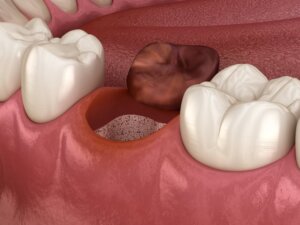
Dry Socket: Symptoms, Causes, Prevention & Treatment
Dry Socket: Symptoms, Causes, Prevention & Treatment What Is A Dry Socket? Dry socket is also called alveolar osteitis. After having regular tooth removal or
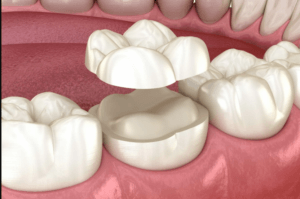
Porcelain Onlay Recementation
Porcelain Onlay Recementation What Is Dental Onlay Recementation? A Porcelain Onlay is a type of dental restoration that is used to repair a damaged or

